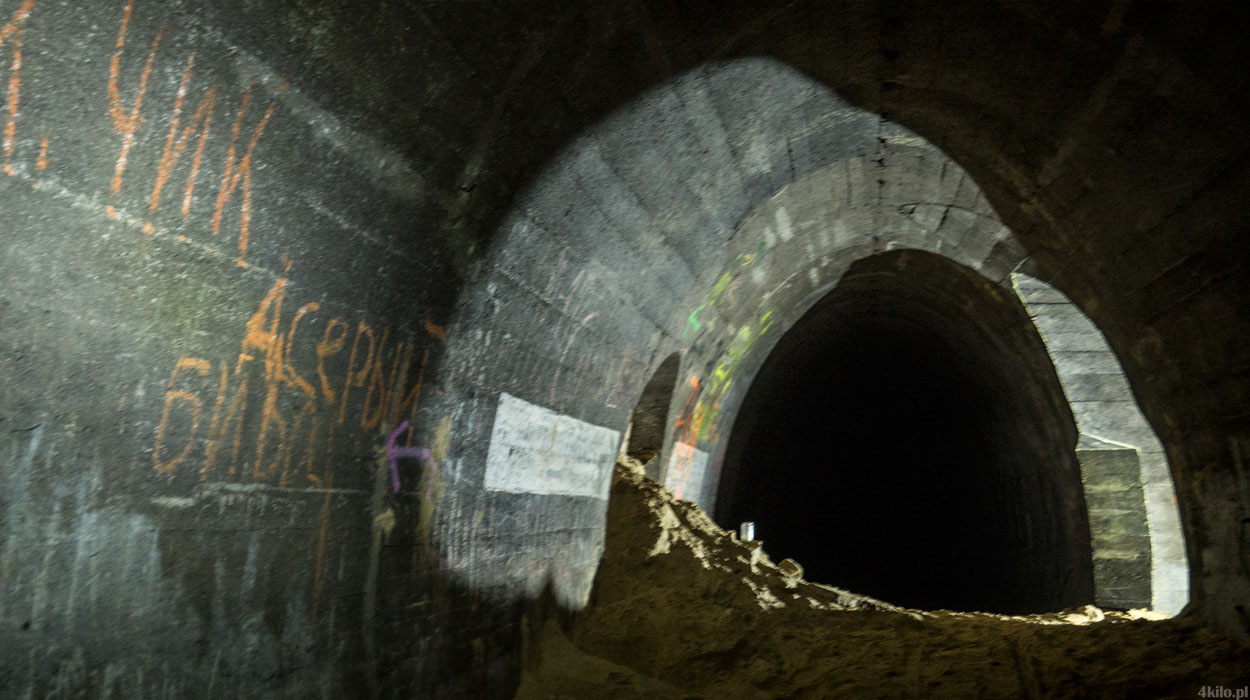Europe has had many hard conflicts and wars, and unfortunately the last word has not been said on the subject. During World War II, in occupied Poland, the German aggressor brought terror and murdered at least 6 million people. This is a very painful issue and will forever remain in everyone’s mind.
Remnants of this conflict are not only memorial museums and concentration camps, but also military installations, bunkers and fortifications. One of the largest such complexes is the Międzyrzecz Fortified Region, which was supposed to close the road to the west for the Russians.
Międzyrzecz Fortified Region
Let’s start with what exactly is this place and for what purpose was it created? This fortified line had the name Festungsfront Oder-Warthe-Bogen (Fortified Front Oder Warthe Bogen), or Międzyrzecz Fortified Region in Polish. It was a heavily fortified and armed defensive line between the Oder and Warta rivers, near Międzyrzecz. The construction of this complex took place in 1934-44 and was the most technologically advanced fortification system of Nazi Germany. And to this day it remains one of the largest and most interesting systems of its kind in the world.
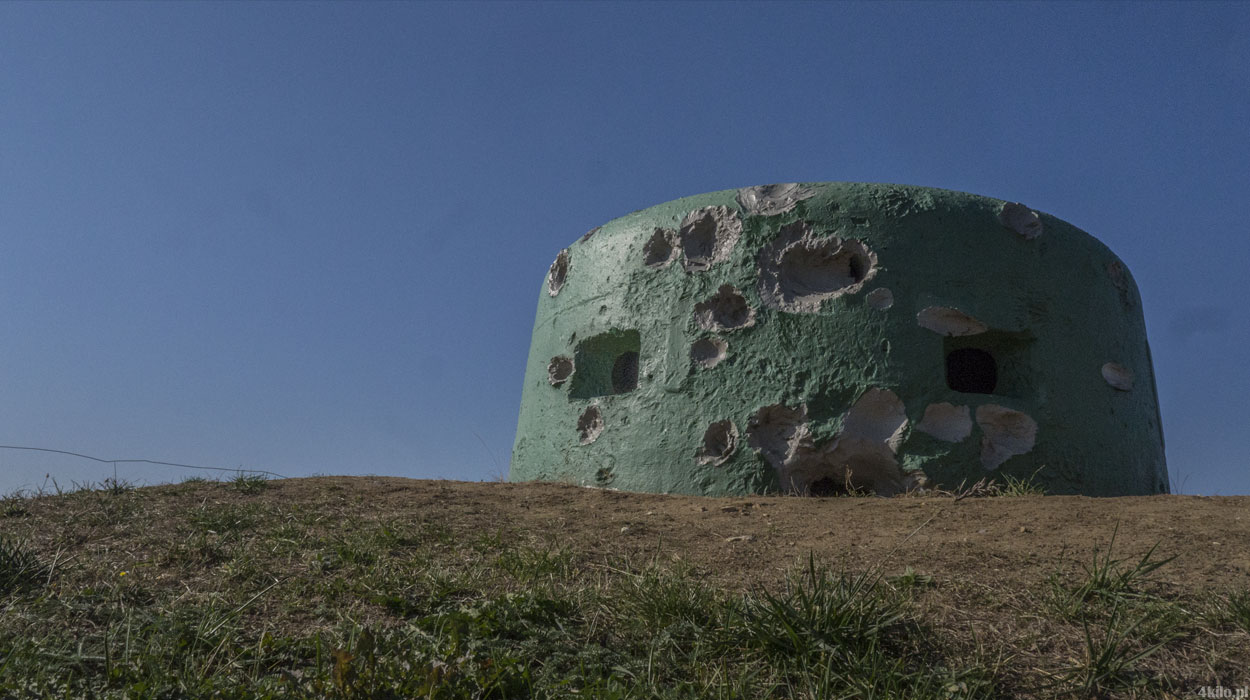
What was the reason for building this colossus and investing huge resources? Germany was well aware of the threat coming from the east, and securing the eastern border was a pressing problem. As early as 1927, contrary to the prohibition under the Treaty of Versailles, Germany began preparations to fortify its eastern border. Of course, all work was carried out in complete secrecy, since the Treaty of Versailles I mentioned above forbade Germany to build military fortifications after WWI.
Fall of the Międzyrzecz Fortified Region
This is such a brief history of the site and its origins, without going into details and nuances. It is worth mentioning that Hitler himself visited the facility several times, but was not satisfied with the progress of the work and decided not to develop the construction more than what was started. And now the funniest part of the story, if I can afford to call anything “funny” related to the horror of World War II.
These massive fortifications designed to stop the invading Red Army were defeated in… 3 days. The Red Army troops did not know that such fortifications were in their path and simply entered their territory, but the resistance they encountered was negligible compared to the rationale of the construction. After a few days it was all over.
Post-war era of the Międzyrzecz Fortified Region
After the official end of World War II in May 1945, Poland found itself in the Soviet zone of influence. When the whole world was celebrating the end of the war and the return of peace, Poland and other Eastern European countries were yet to learn what the terror of the Soviet occupier meant. And so it went on until 1989 and the Round Table agreements. But that’s a topic for another story….
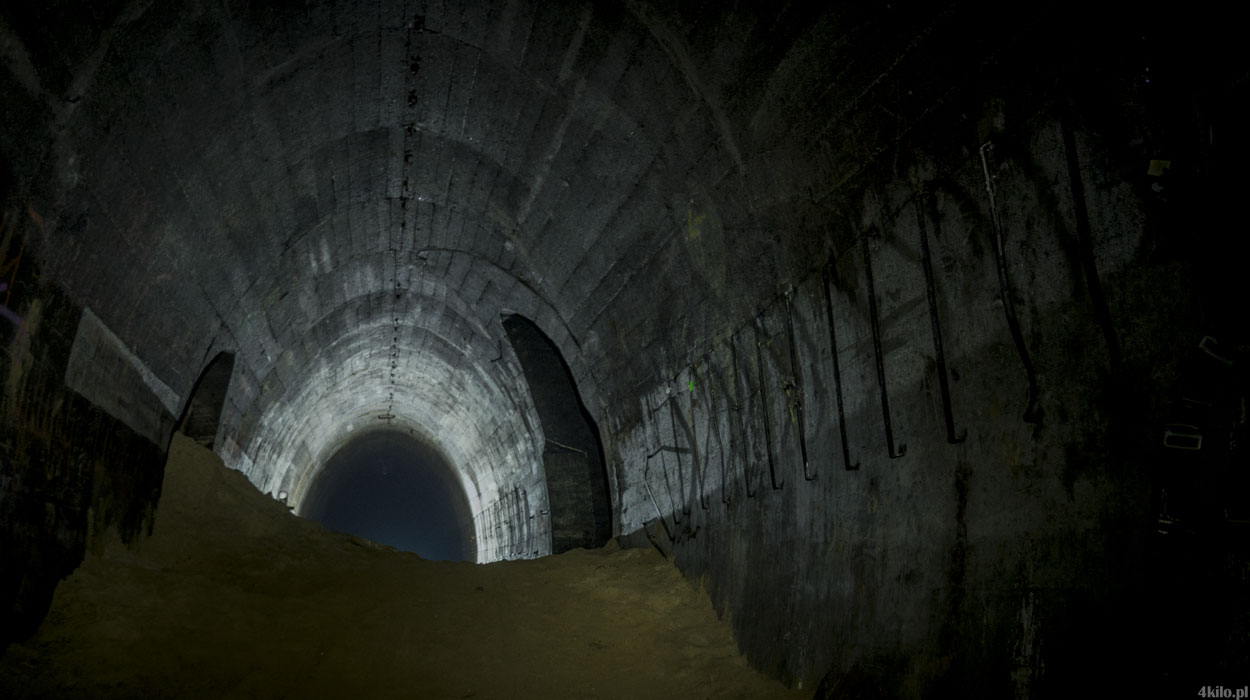
When the Polish lands fell to the Soviets, the plundering of everything of any value began. It was the same with the fortifications in Miedzyrzecz. They began cutting out armored domes, machinery, scrap metal and anything that might have value. Some of the objects were blown up to test their strength or simply to leave nothing reusable behind.
Flooding of the underground
The abandoned and raided underground could not function as designed, so ground water began to flood some of the tunnels. On the positive side of the abandonment of this facility by humans was the nesting of bats. For many years, this underground system has been the largest bat wintering ground in Europe and is now a legally protected nature reserve.
There are guided tours of the facility, and in fact it is a must-see for any tourist who will be in the area. However, we are not interested in guided tours and came here for something else….
Diving in flooded World War 2 bunkers
I first learned about the system completely by accident when I was a teenager. I no longer remember who exactly, but someone took me to show me what was hidden underground. Since then, I have been to this place many times and looked into almost every hole and every tunnel. However, some of these tunnels were always inaccessible to me due to complete flooding. And although we tried to go in as deep as we could, or even swim in that damn cold water, there was no option to reach the end of the system.

That changed, however, when I became a professional diver. And although I’ve been away from Poland for a long time, I managed to convince my friend and organize a crazy underground camping trip during one of my trips to Poland. The goal was obvious – to dive in these undergrounds and reach the end of the system.
Entering the underground system
The entire underground system is almost 35 kilometers of tunnels. There are several official entrances to the system in a designated tourist zone, where one walks with a guide, and lights are mounted on the walls, and everything looks just like it did decades earlier. We, of course, were interested in the rest, where there is nothing but darkness, flying bats and water dripping from somewhere.
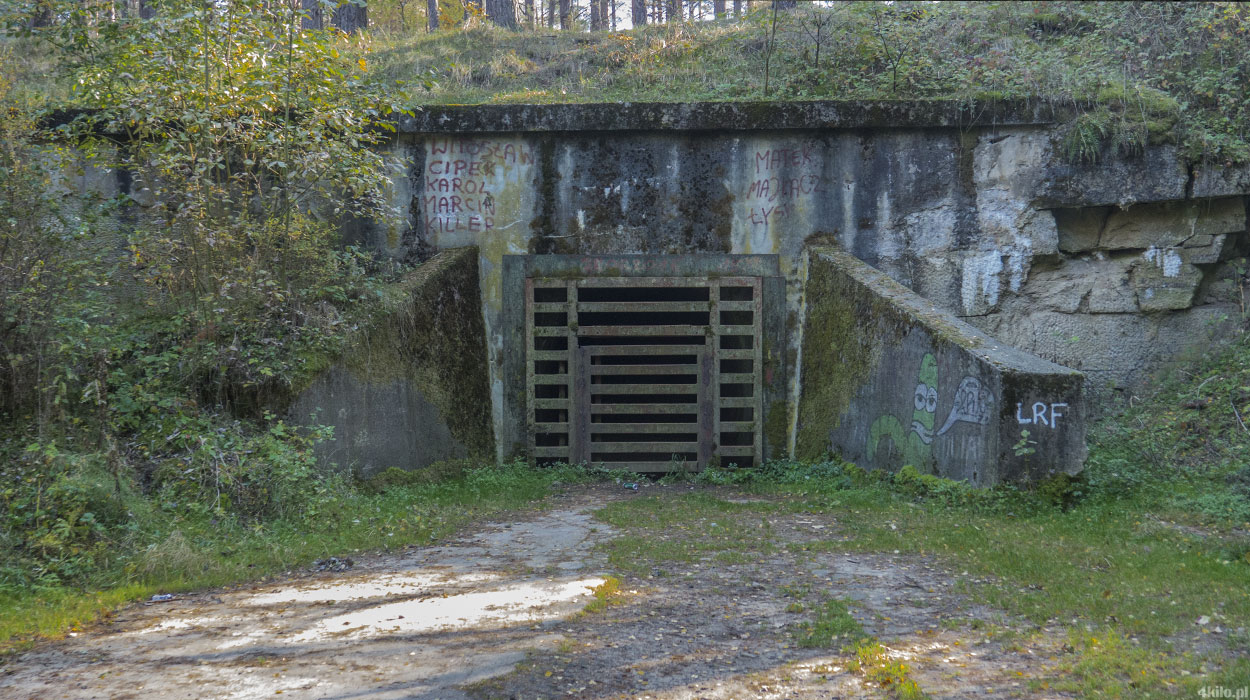
Such an escapade is done at your own risk, and finding the entrance requires knowledge and experience. This, fortunately, I do not lack, so we were quickly able to find one of the unofficial entrances hidden in the woods and pull all the equipment inside. And there was a fair bit of that, because in addition to camping gear and food, we also had to bring my diving equipment. Scuba tanks, regulators, dry suit, weight, etc. The walk took us more than two hours, but we finally arrived at today’s bivouac site. Here we left the deposit and headed to the dive site, another 15 minutes’ walk away.
Dipping into the water
Preparing all the equipment and putting everything on, was done only in the dim light of a headlamp. The surrounding darkness and dark walls made every bit of light seem to be sucked out by the light-thirsty underground complex. The incredible silence contrasted with the echo that even the slightest noise caused. When we said nothing, the silence was unbearable, but as soon as any sound came out of our mouths – it was like a grenade explosion.

After putting everything on and checking my equipment, I was already following the dark tunnel on my own. My friend stayed in the only place that was still dry enough for him to wait there in relative safety for my return. I, meanwhile, moved deeper into the water, which was rising with every step and after a few minutes flooded almost the entire tunnel. I was already swimming, but still with my head on the surface. After another few meters, the water had already filled the entire tunnel. What I came here for had begun. Diving.
I have reached the end
I entered one tunnel, which turned out to be quite short so I headed back to the intersection to explore the other part of the corridor. There was silt at the floor of the tunnel, which I did not want to move at all costs. That would have reduced my visibility to practically zero. There were strange infiltrations on the walls, which formed a structure that looked like hanging hair. White, long hair. A little creepy…
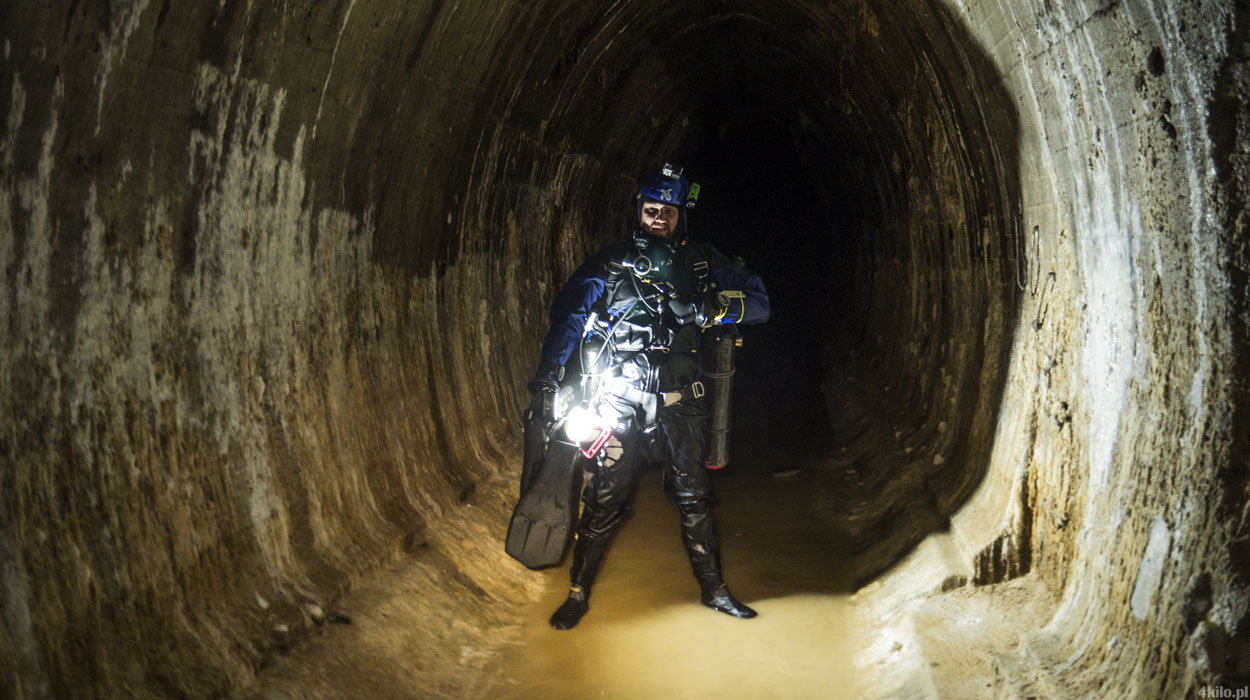
On the floor I found some wooden pieces, a strange wooden platform, and the remains of an electrical system. The whole thing was already equipped with a guide line by previous divers, which made it easier for me to dive. Of course, this was not a surprise since I knew that I was not the first diver here and dives in this part of the complex had already been made before. I myself even used the information of the previous divers in planning my trip.
At the end of the tunnel I saw a brick wall closing off the further path. This was how the builders of the complex closed off the tunnels, which for the moment were not to go anywhere further. This meant turning around and returning to my waiting friend.
Underground camping in wartime bunkers
After the dive, we returned to the bivouac site very tired and hungry. From the time we entered the system to the time we sat down at the bivouac site, almost six hours had passed. We had a right to be tired. After filling our bellies and drinking a few beers, we fell into the hammocks for a well-deserved rest.
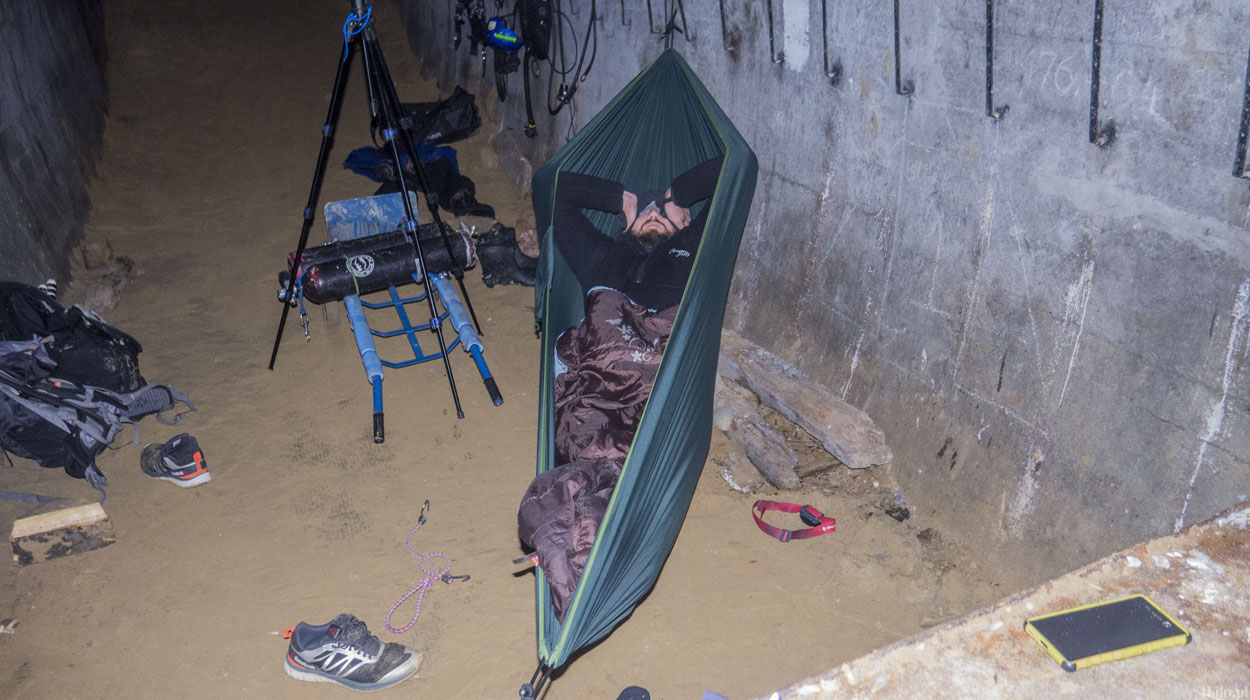
This was not my first night here, but it has been many years since the last time I slept here. The strange silence, 100% darkness and the echoing of every sound were even hypnotizing. When I say darkness, I don’t mean just at night, when there’s always a hint of light sneaking in from a streetlamp or the stars. Here it was complete blackness. Your senses go crazy and you start to hear marching soldiers who are just walking towards you. Staying overnight in such a place is an incredible experience for your senses!
Time to finish our adventure
A morning in such a place is also not typical. You are not woken up by the light or the sound of birds. It’s still 100% darkness and your senses want to tell you that it’s still the middle of the night and to not fool around with getting up so early. Sadly, it’s already daytime and after eating a quick breakfast, it’s time to pack up and hit the road. From the exit, we are more than 2 hours away on a fast march. This time with wet gear.
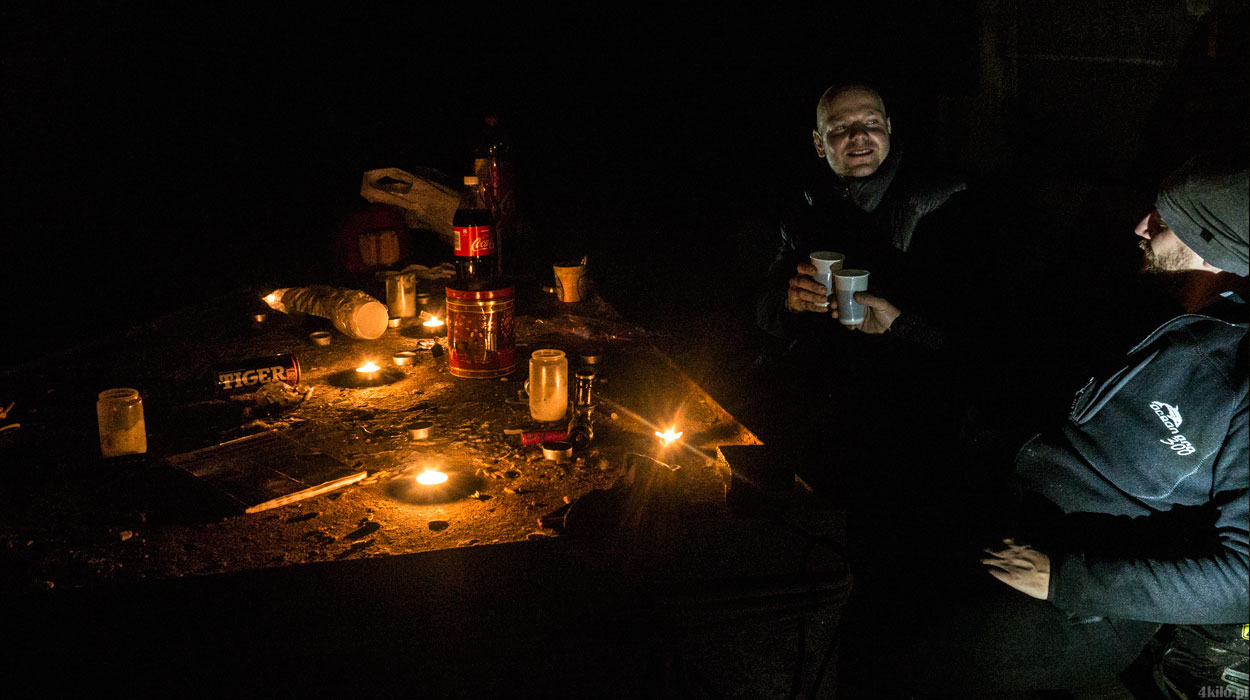
Upon reaching the exit, the first thing that hits us hard is the smell of the forest. In fact, not only is there a lack of light in the underground, but there are virtually no smells. Suddenly a whole range of fresh smells of plants, trees and even air enters our noses. It’s really such a small thing that we don’t notice on a daily basis. This luxury that we can see and smell.
An unsolved mystery
I think that in most such places, there are always some secrets, witnesses, found documents that say we do not know everything. It is no different in the case of Międzyrzecz Fortified Region. As I mentioned, the further way in the dive was closed to me by a brick wall. We know that the designed system was to be larger than the current one. We also know that work has been put on hold, but…. Apparently, despite the work being stopped, there is a discrepancy in the length of the known corridors with those according to German documentation. It’s as if part of the object has been hidden.
I know it sounds like an urban legend, and it probably is. But there is an element of truth in every legend. It is well documented that a chamber was found which was hidden behind such a brick wall, and in this very chamber were hidden treasures from a nearby museum. That is a fact. Apparently, many years later, scraps of documentation were found in some archives showing that there were more such chambers in this system. At least one is still missing today…
